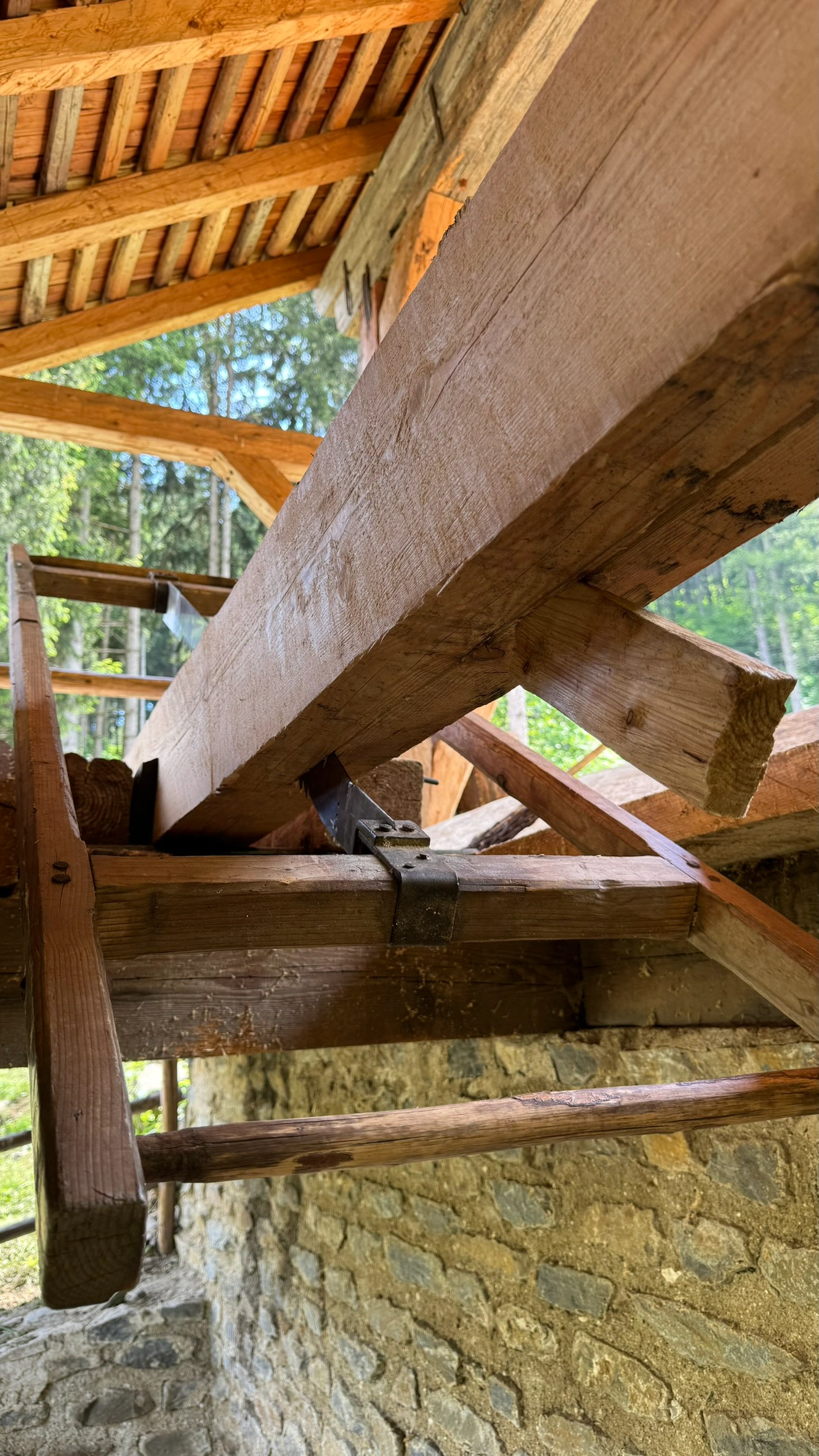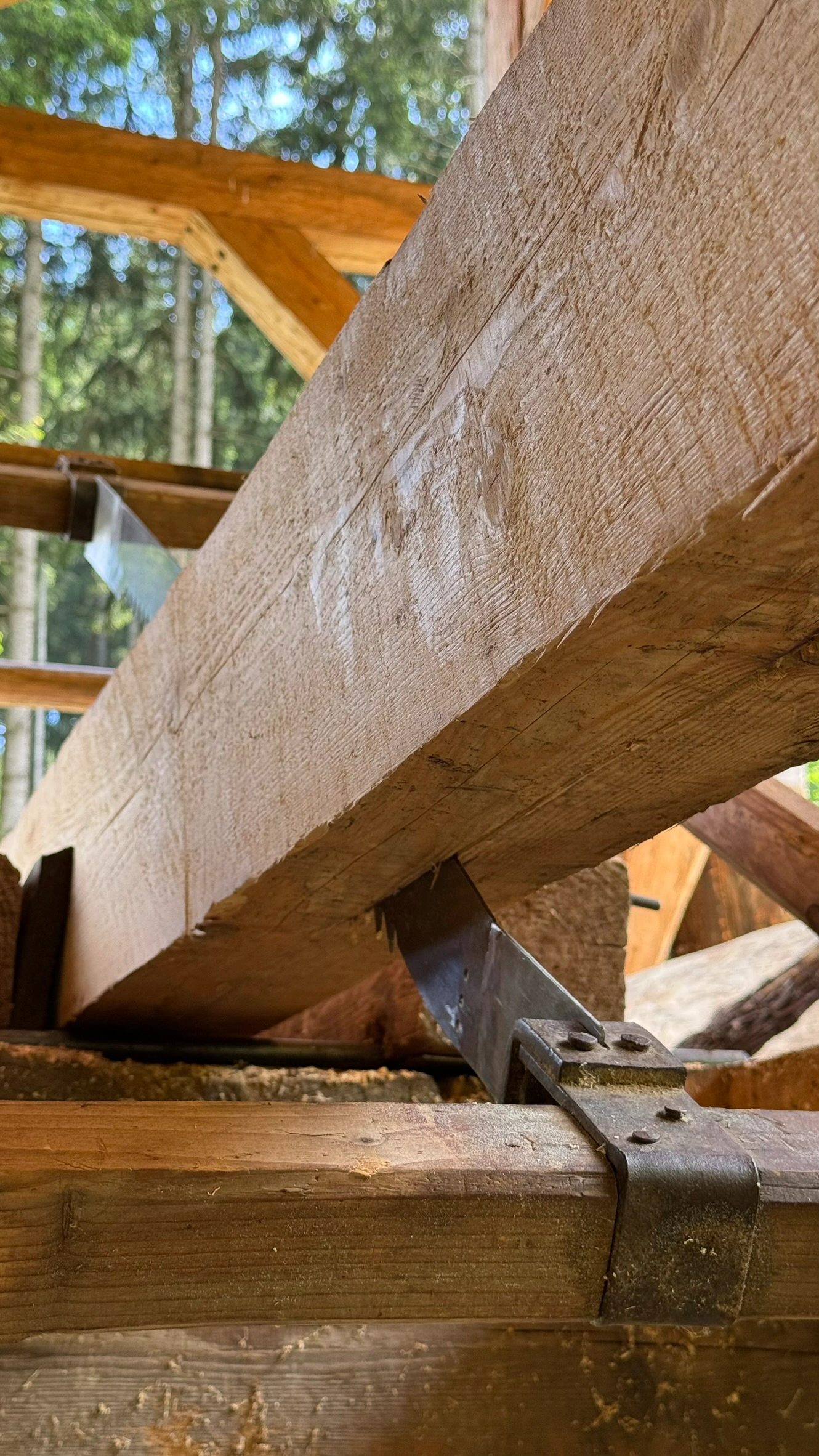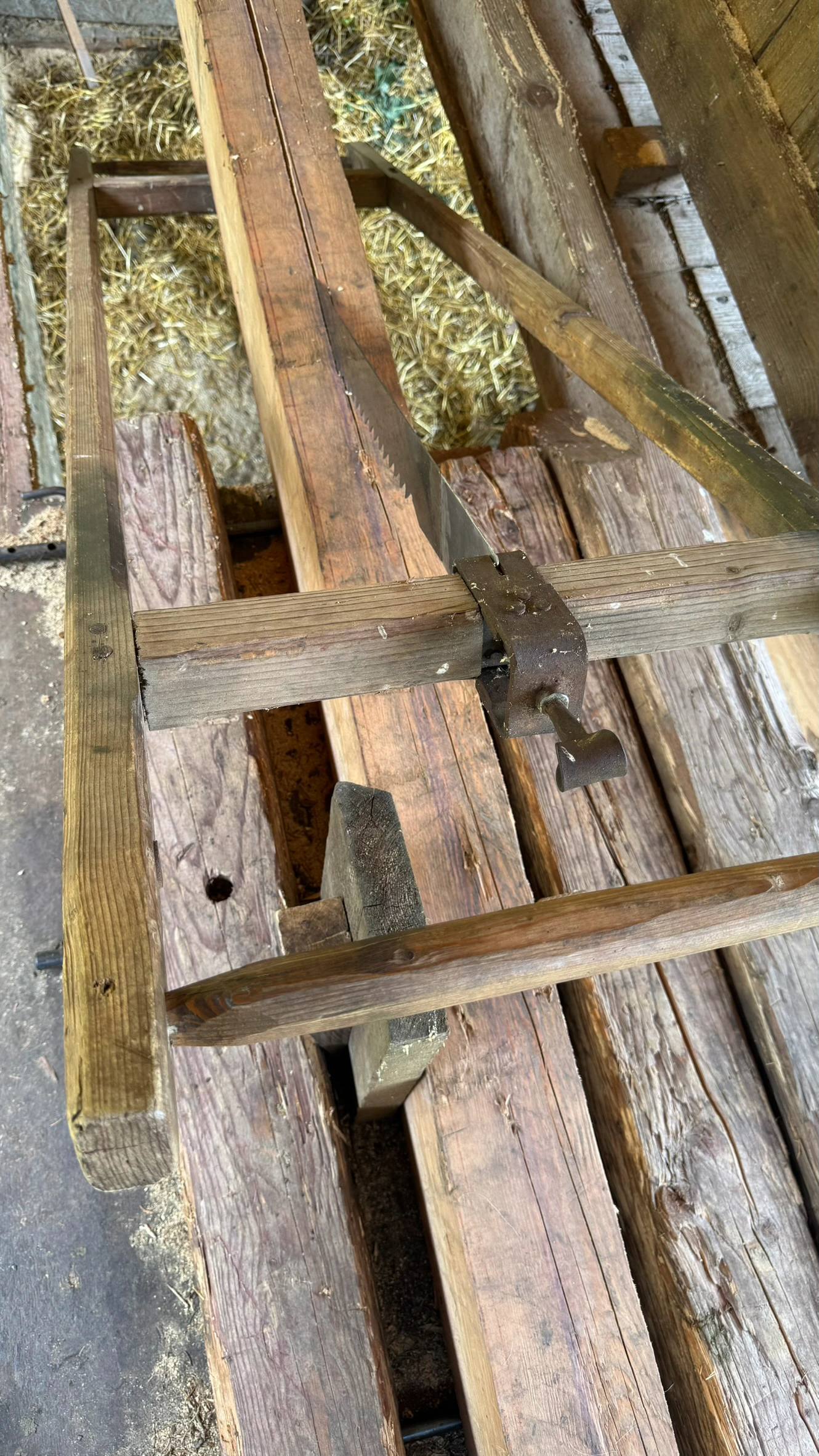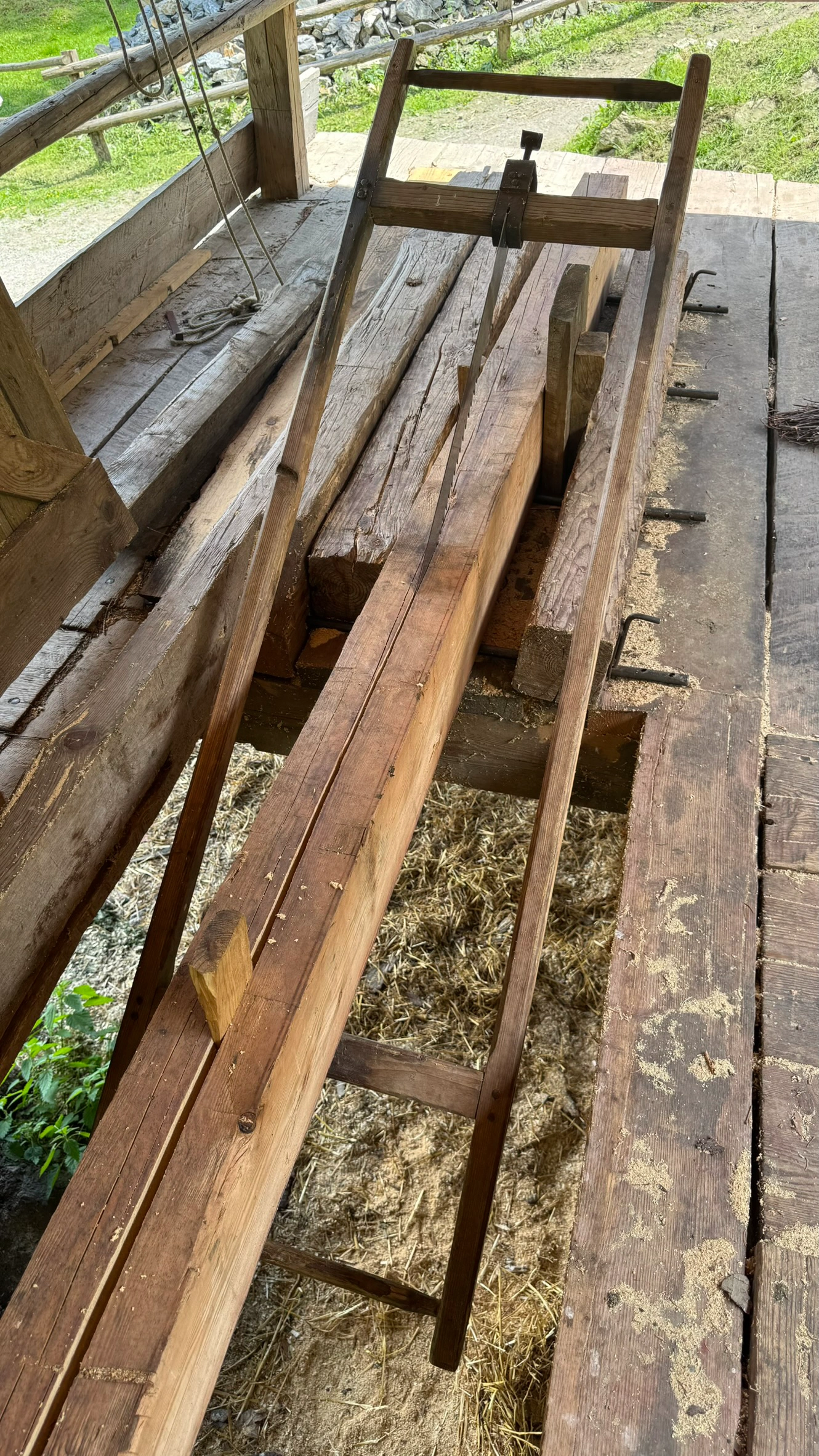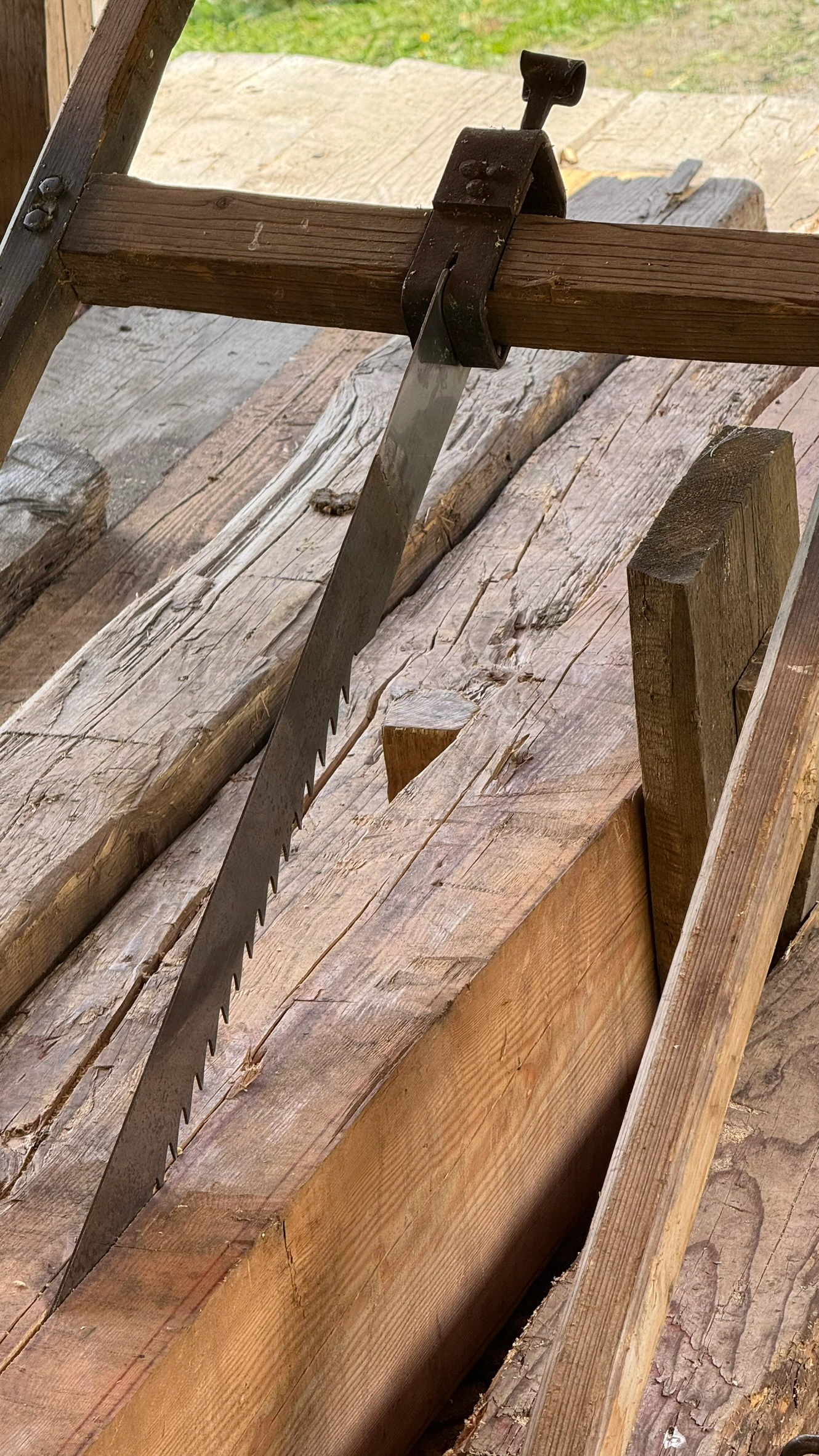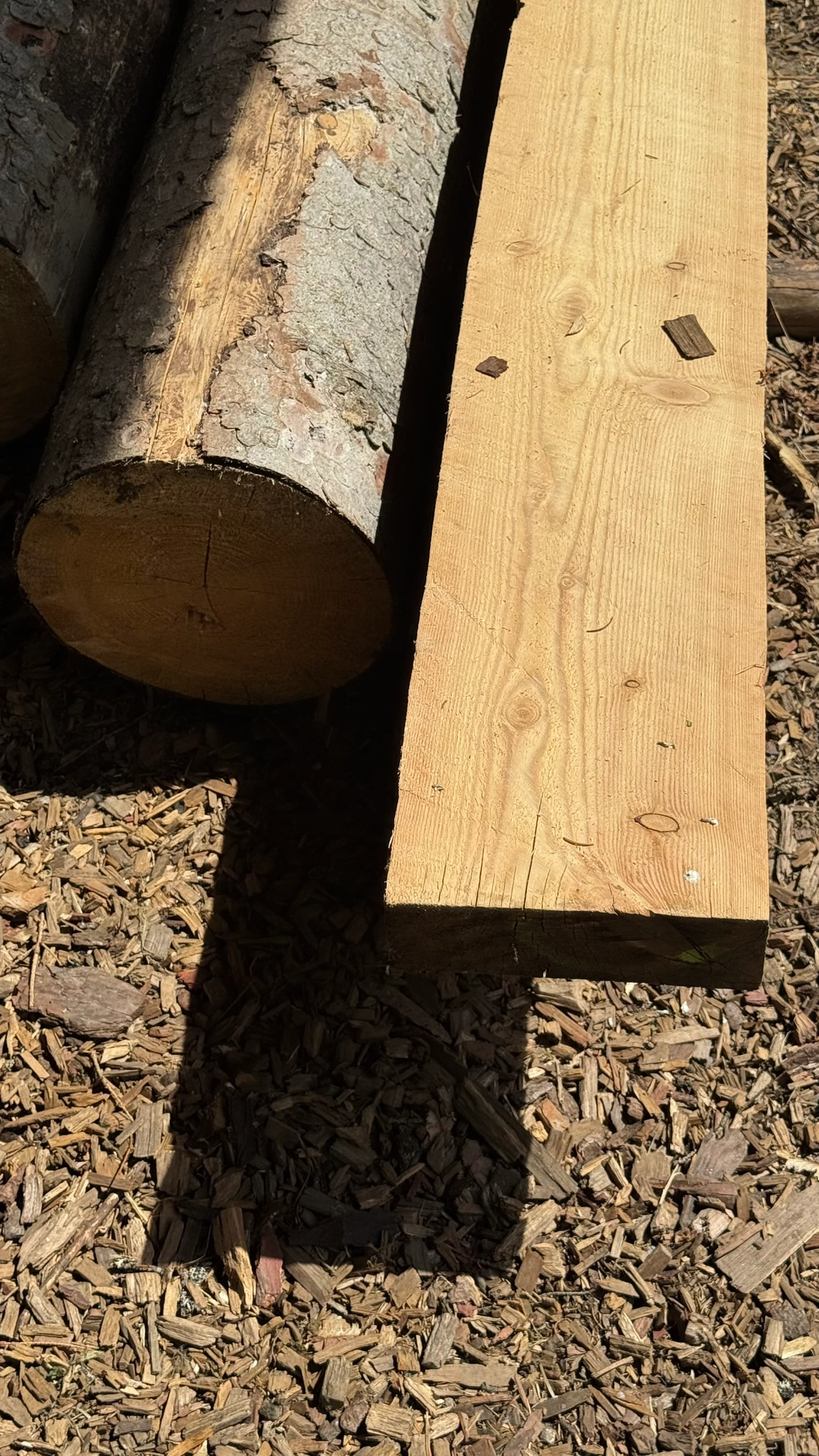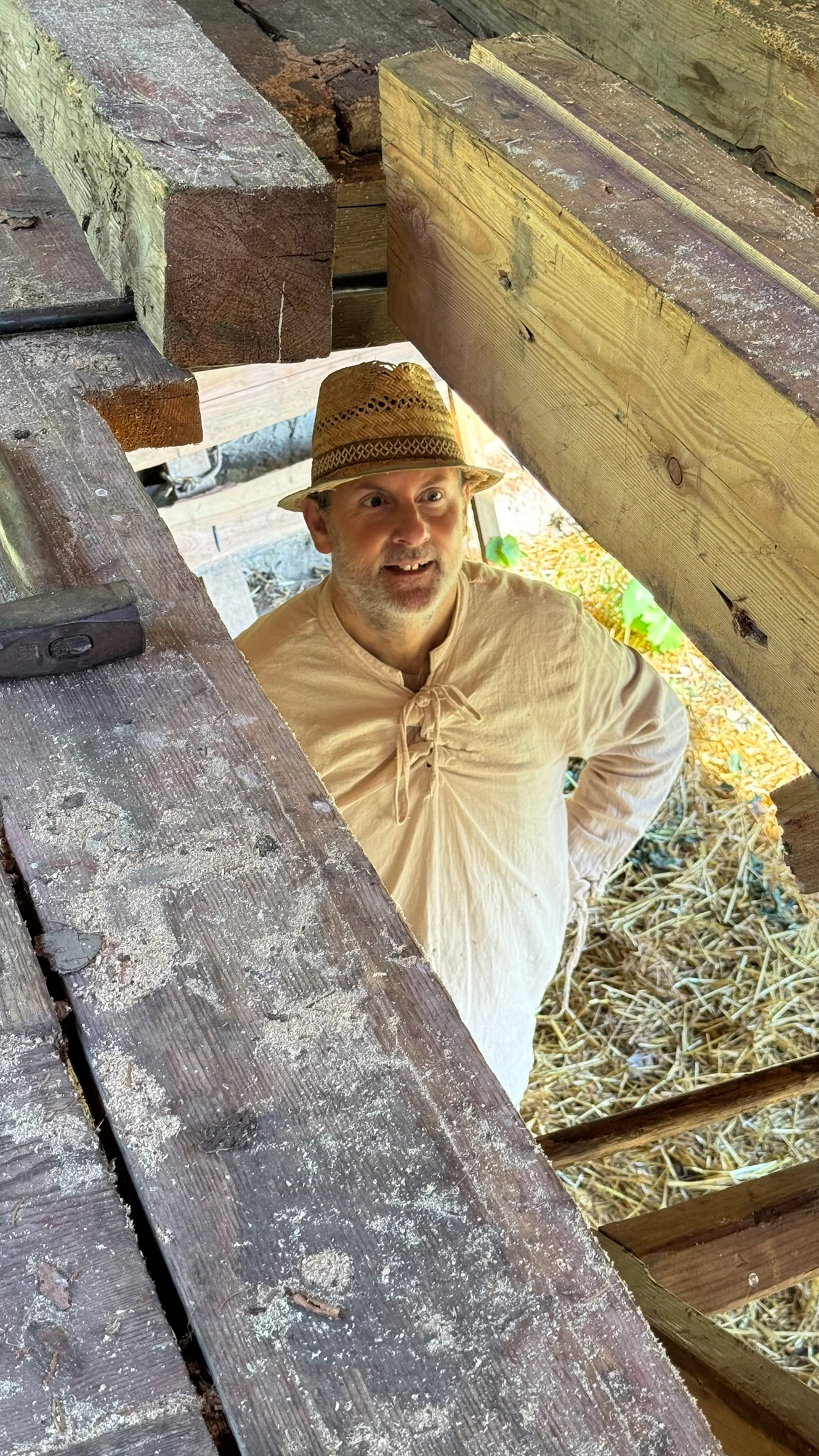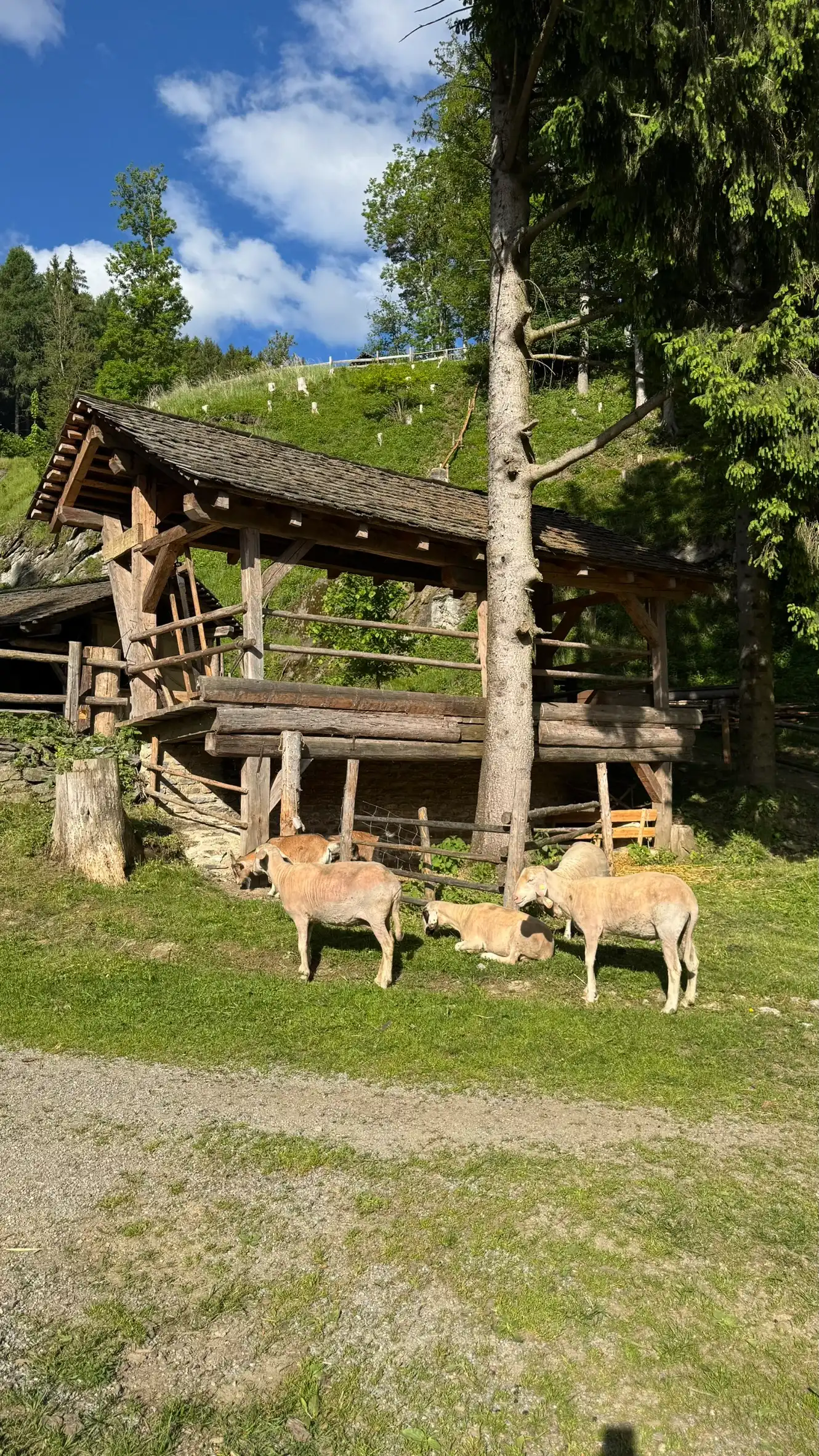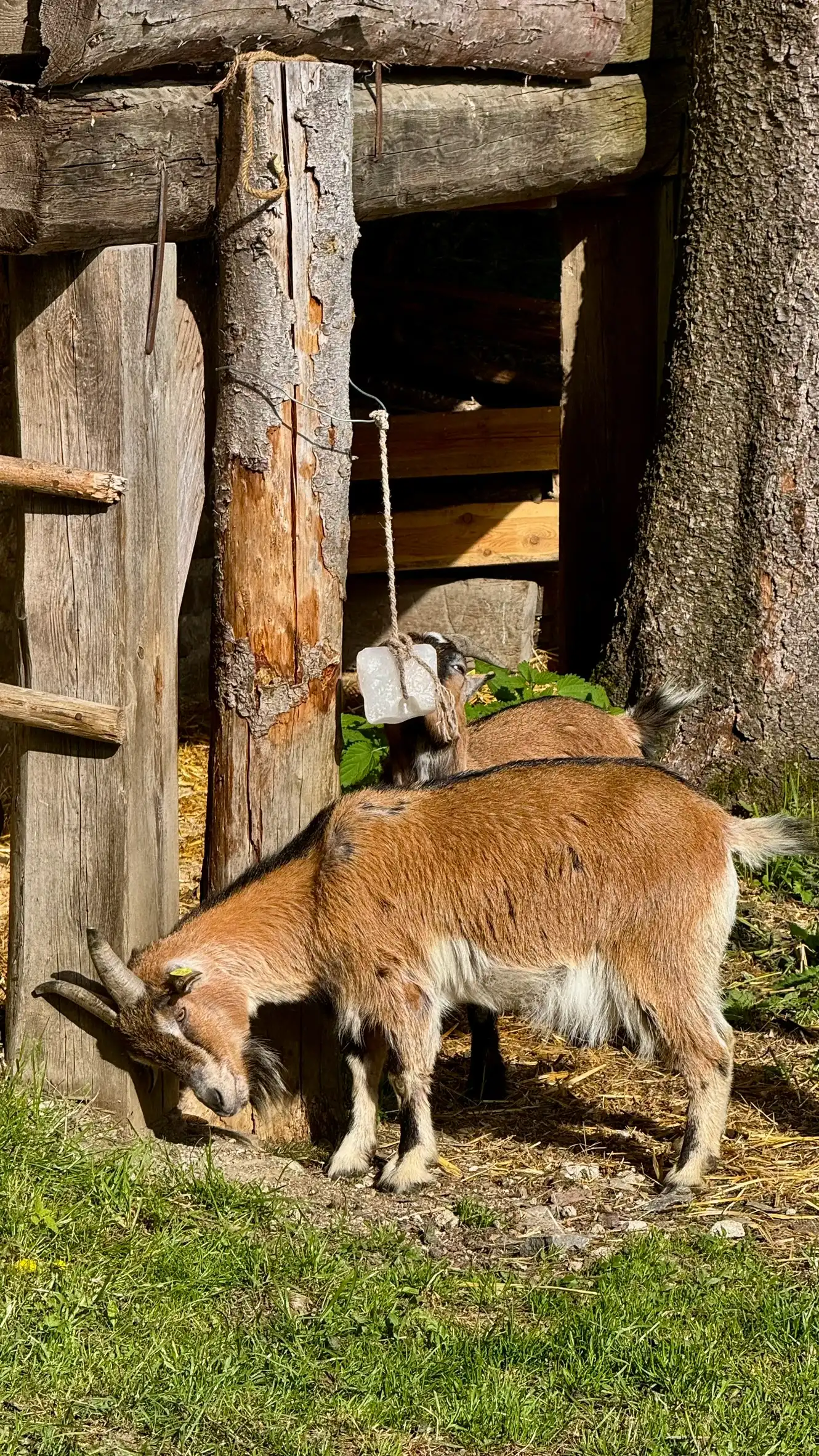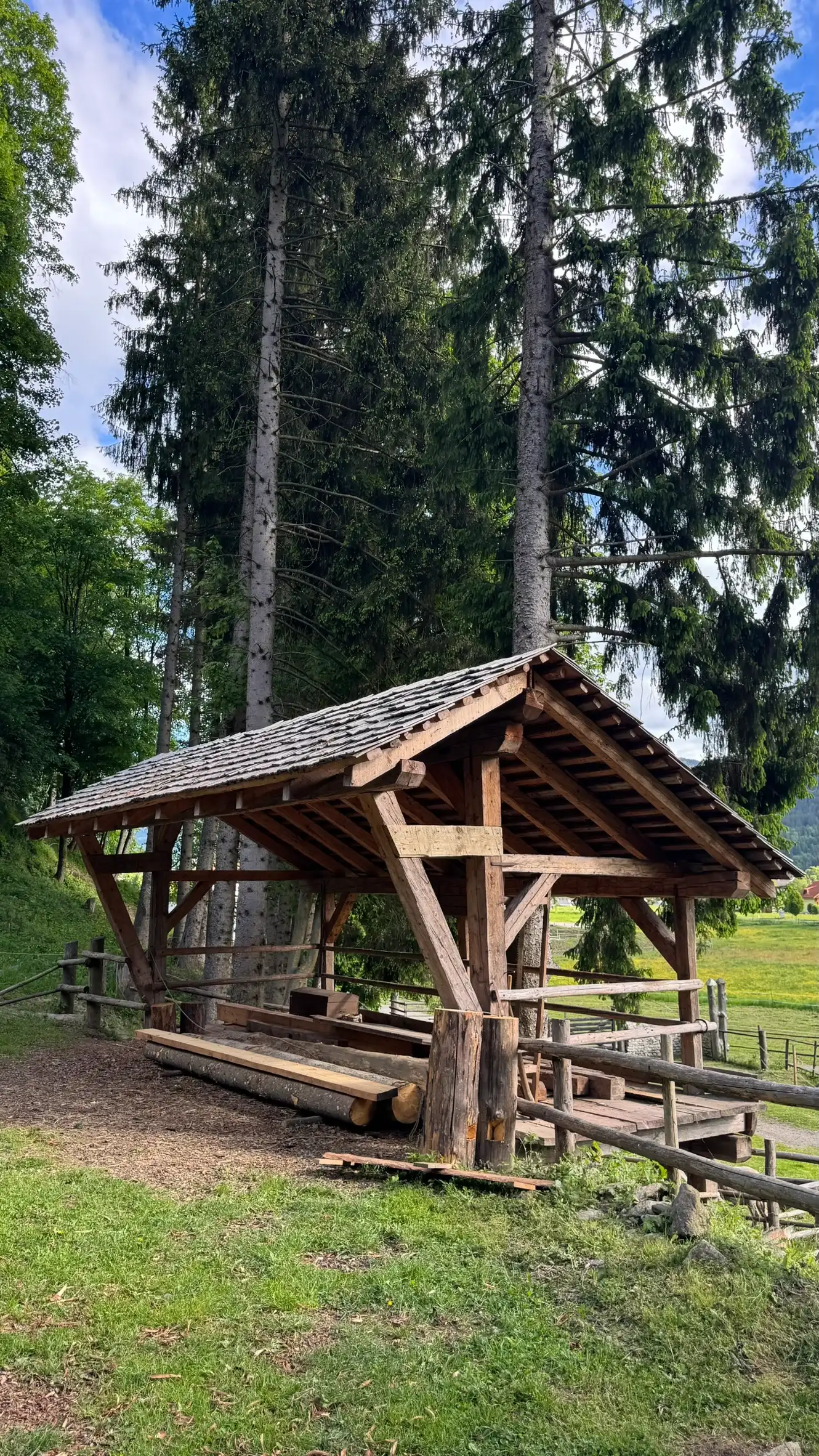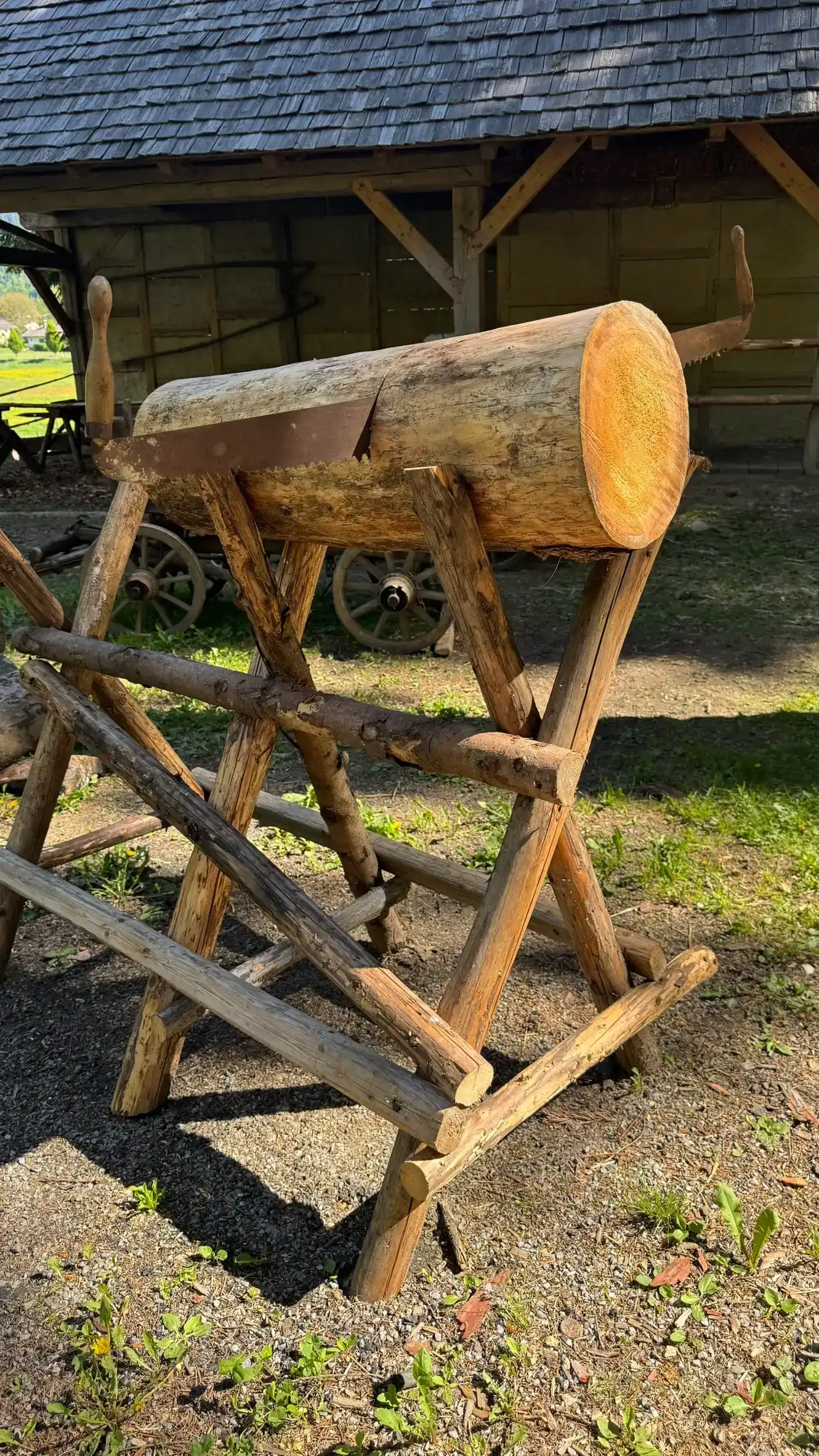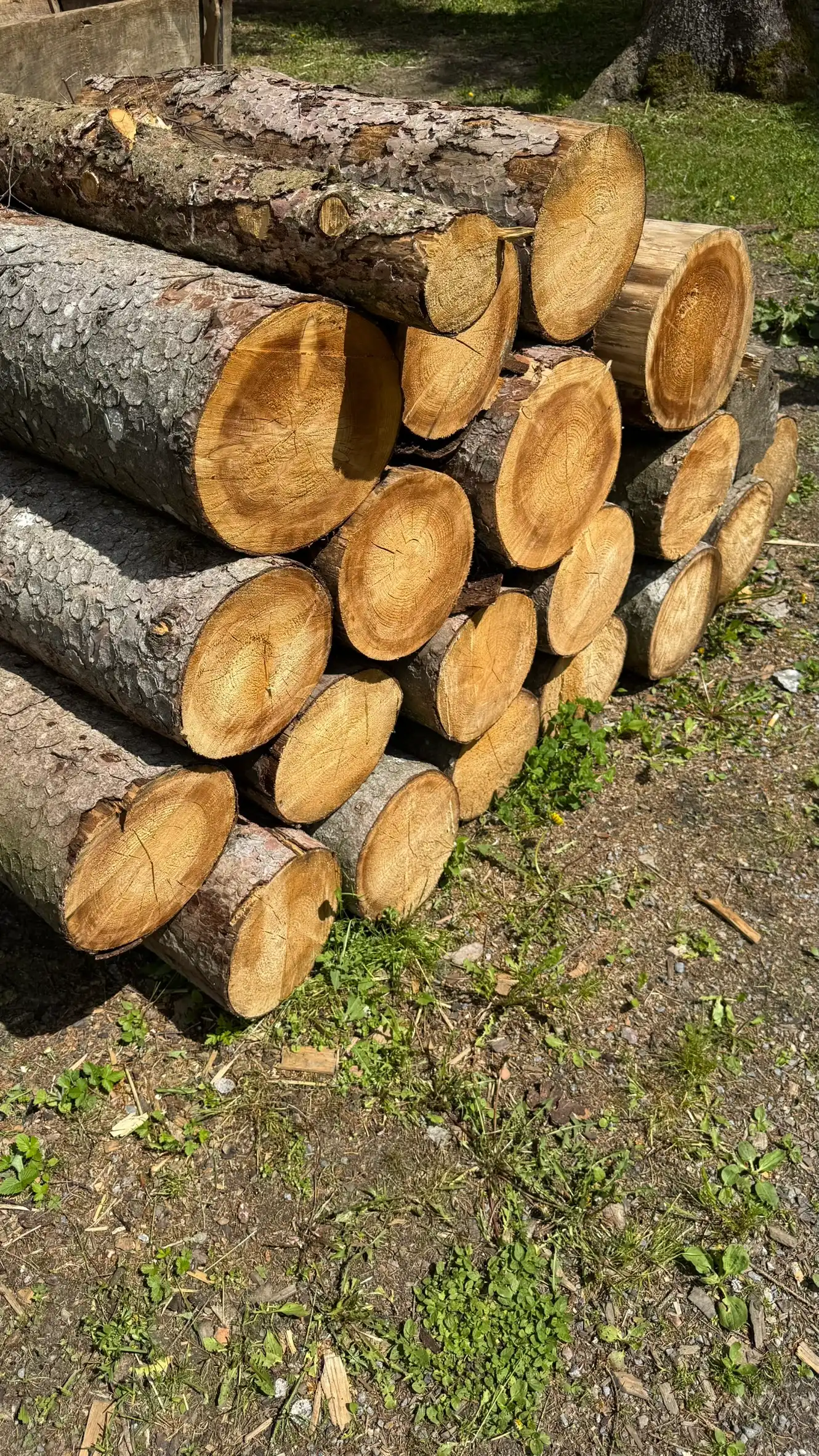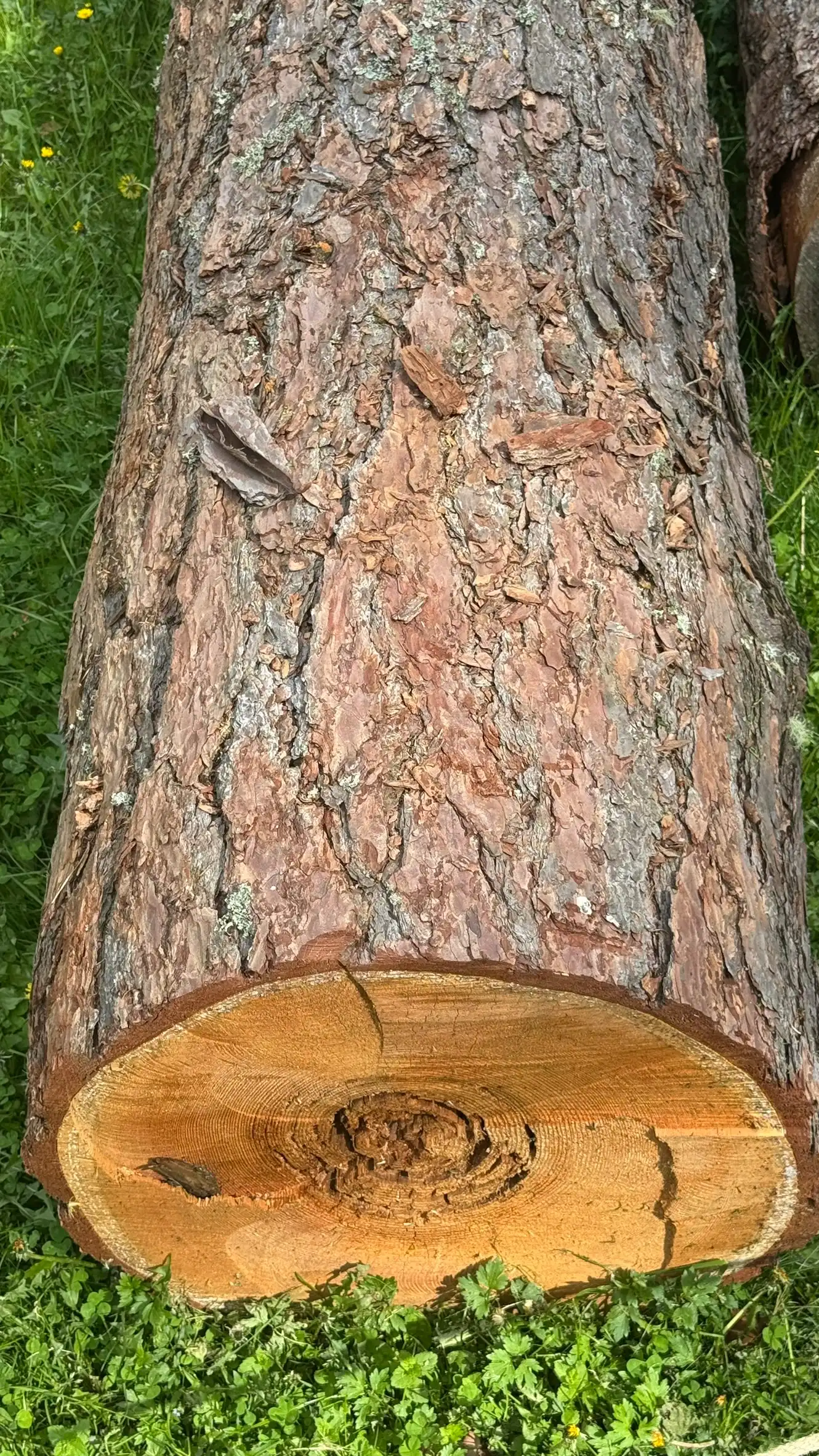Medieval Saws
In the Middle Ages, there were two main types of saws that have been preserved to this day: the frame saw and the frameless saw. Over time, depending on the intended use, various specialised forms developed from both basic types.
Commonly used were: the tensioned frame saw (the saw blade is clamped on both sides in a wooden frame, forming one of the long sides of the rectangular wooden frame, with the teeth facing downwards) as well as the untensioned frame saw (the saw blade is fixed centrally between the side beams and points at a right angle to the frame surface). The latter was used for cutting large logs and beams and required a saw rig or a saw pit to allow vertical or angled cuts. In this process, one worker would stand above, and the other below the log (“Aufschneider” – “Obezahrer”). The bow saw was also used (the blade forms the chord of a semi-circular iron bow).
Frameless blade saws: Split saws (band saws) were two- or four-man saws with a blade 1–2 metres long, up to 20 cm wide, with a straight or curved edge and handles at the ends. As the blade was always kept under tension, it stabilised itself and did not require a tension frame.
The sawing work could be performed by one person (e.g., a jigsaw), or by two or four people (e.g., bow saw), depending on the form and size of the tool.
